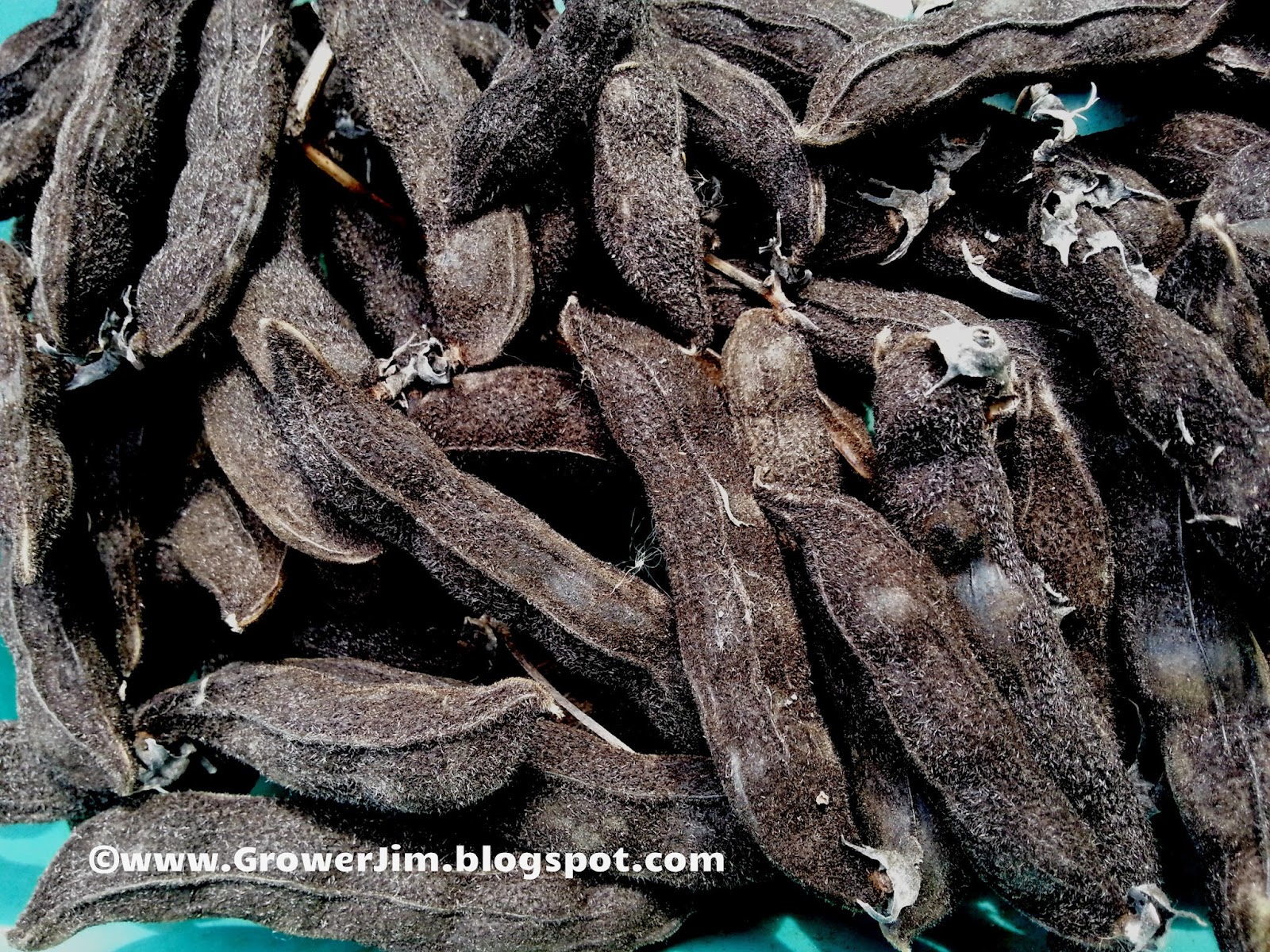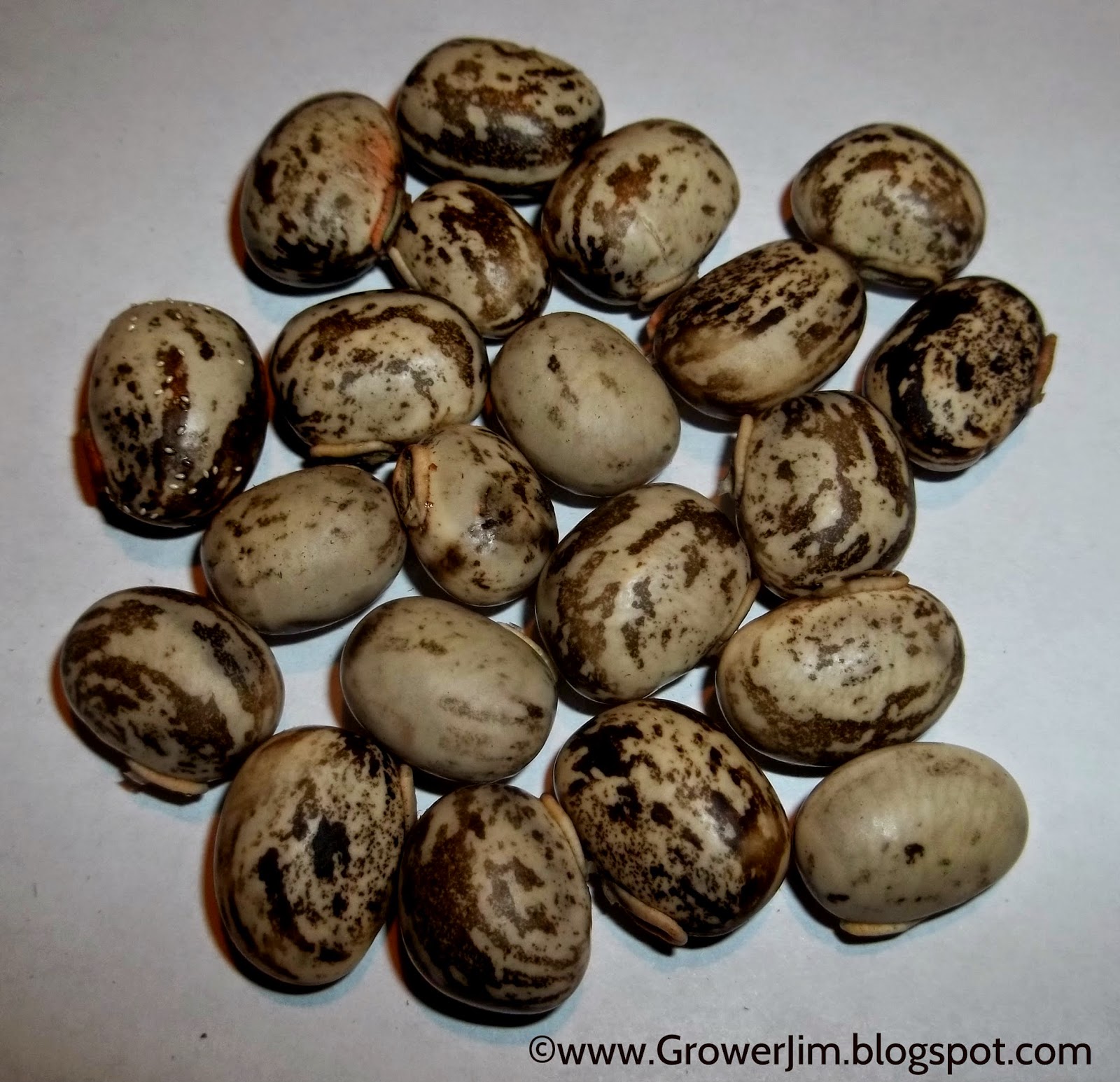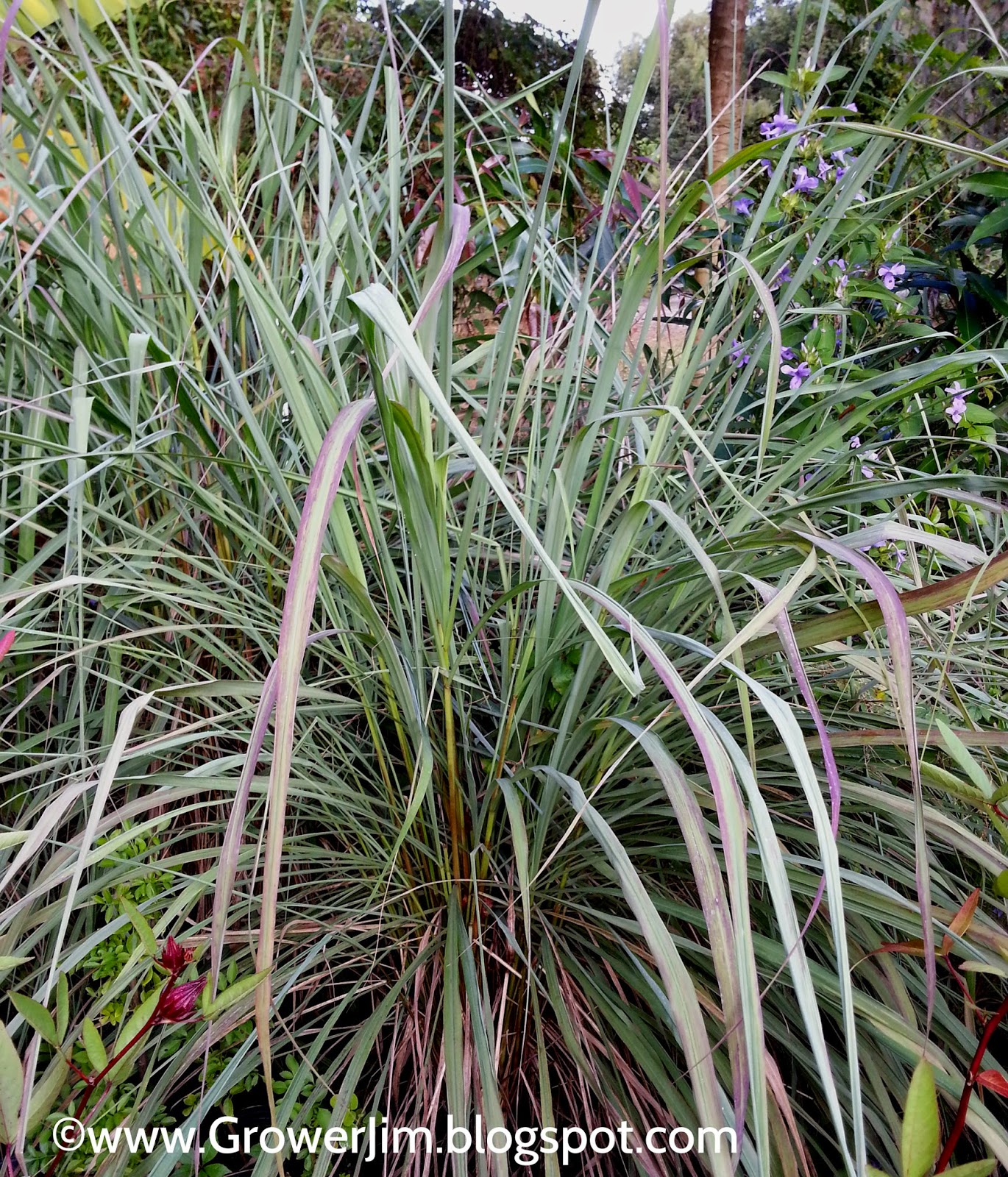Velvet bean (Mucuna pruriens) is a legume with numerous health benefits. The plant grows as a vine so some sort of support is needed when growing it in the garden.
The vine climbs by twining around adjacent supports, but the stem remains thin all the way to the base of the plant, even though it may reach 15-20 feet in height. Leaves are tri-foliate.
This is a nitrogen-fixing legume so it has low nutrient requirements, and may benefit other inter-planted crops.
Purplish flowers appear in pendant clusters starting in mid- to late summer.
The pods swell quickly and are dark green covered in black fuzzy hairs. In some varieties these hairs are skin irritants that make shelling the beans a literal pain, but the cultivar M. pruriens var. utilis is the non-itchy variety.
At the end of the growing season the vines dry up and the pods turn completely black and hard (2-3 months after flowering). The pods retain the velvet-textured covering even after they are dried and each contains 5-6 seeds.
At this point the beans can be shelled out for home use. Seed color varies with the different cultivars and may be white, black, marbled or speckled.
Treatment to make the seed edible is by boiling in water for one hour, pressure-cooking for 20 minutes, or soaking in water for 48 hours and then boiling in water for 30 minutes. The beans can also be roasted and ground to make coffee; in some parts of Central America the plant is known as Nescafe!
In some regions velvet bean is used as a green manure or cover crop in fields. It can also be harvested for forage or silage.
Mucuna pruriens is native to southern China and eastern India. The plant requires a 6-9 month growing season to mature the seeds, so it is best suited to subtropical climates if you are growing it for the beans. It can be grown anywhere as a cover or forage crop.
The health benefits of velvet bean have been widely studied. The findings reveal "it is a good source of food, as it is rich in crude protein, essential fatty acids, starch content, and certain essential amino acids ... all parts of the Mucuna plant possess medicinal properties. The main phenolic compound is L-dopa (5%), and M. pruriens seeds contain some components that are able to inhibit snake venom. In addition, methanolic extracts of M. pruriens leaves have demonstrated anti-microbial and anti-oxidant activities in the presence of bioactive compounds such as phenols, polyphenols and tannins, and preliminary studies on keratinocytes support its possible topical usage to treat redox-driven skin diseases. Collectively, the studies cited in this review suggest that this plant and its extracts may be of therapeutic value with regard to several pathologies..."
A more detailed listing of the health benefits of Mucuna shows it is effective for diabetes, spasms, inflammation, infertility, pain, growth hormone deficiencies and as an aphrodisiac.
Buy velvet bean seeds here!
Wednesday, November 26, 2014
Thursday, November 20, 2014
East Indian Lemongrass (Cymbopogon flexuosus)
East Indian lemongrass (Cymbopogon flexuosus) is one of the quickest and easiest herbs to grow from seed or divisions. It's also one of the most useful herbs to have in your garden.
Plants started early in the growing season will produce many leaves for harvest, and become quite a large plant by the end of the year. The useful part of the plant is the long blue-green leaves, which can easily reach 4 feet in length. They are thin and flexible, so they bend over and give the entire clump a soft grassy look.
East Indian lemongrass is the species used commercially for lemon scent and flavoring in a wide array of products. The fresh or dried leaves are useful in tea or other drinks, as well as soups, stews, fish, meats, or any dish that would benefit from a lemon flavor. Leaves can be harvested any time of the year, but they do have a sharp edge which can slice your skin similar to a paper cut, so be careful when cutting them.
The essential oil from this species has also been found to have strong anti-cancer qualities.
As cool weather arrives in the fall, the leaves take on a reddish-bronze coloration.
In locations with nearly year-round growing conditions, the plants send up tall flower spikes in the late fall or early winter. These plumes of flowers can reach a height of 7-8 feet, adding to the ornamental appeal.
If you allow the plumes to remain all winter, seed will be produced and you're likely to find many lemongrass seedlings coming up in the surrounding area in spring.
As the common name indicates, Cymbopogon flexuosus is native to India. In some regions this species is known as cochin grass or Malabar grass. It is recommended for USDA Zones 8-11, but can be grown as a container plant anywhere. In fact, the plant in the top photo is about 6 feet tall in a 1 gallon pot!
Thursday, November 6, 2014
Nopalea cochenillifera
Nopalea cochenillifera is a cactus that is edible and has many medicinal properties. It also makes an attractive, drought-tolerant landscape plant.
This species grows to about 15 feet tall and can become tree-like in just a few years.
The pads, or cladodes, are about 8-10 inches in diameter and thicken up as they age to support new growth higher up on the plant. Eventually, the base becomes more rounded like the trunk of a tree.
Flowering generally occurs in spring. The blooms are very showy with their orange petals and fuchsia-red stamens.
The pads are the edible part, and should be harvested when they are near full size, but still have a few rudimentary leaves visible.
The pads are nearly spineless, but it's a good idea to scrape away the bumps with a sharp knife or scrub with a scouring pad, just to be on the safe side. It's common to trim away the thickened base of the pad since this is often tougher and not as good to eat. The rest can be diced or sliced up into strips, and eaten raw, steamed or stir-fried.
Some people leave the pad whole, make long cuts down the length (like fingers on a hand), season it, and throw it on the grill.
Nopalea can also be juiced like any other green vegetable.
Nopalea should not be confused with nopales. The word nopales is used for the pads of any edible cactus species, most commonly Opuntia ficus-indica. The documented health benefits come only from Nopalea cochenillifera.
Medicinally, Nopalea is used for type 2 diabetes, high cholesterol, obesity, alcohol hangover, colitis, diarrhea, benign prostatic hypertrophy (BPH) and viral infections, according to WebMD, although some of their statements are contradictory.
Botanical extracts of the plant have been shown to have anti-microbial activity.
The pads are also used as animal fodder. The species name is derived from the cochineal insects that feed on the plant, and are collected to produce a bright red dye. This insect dye is used in food coloring, soft drinks, lipstick and other cosmetics.
Nopalea cochenillifera is native to Mexico and grows as an introduced plant throughout the
Caribbean. It is recommended for USDA Zones 9-10.
Subscribe to:
Posts (Atom)
















